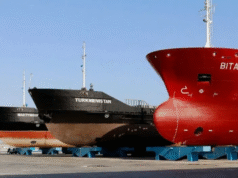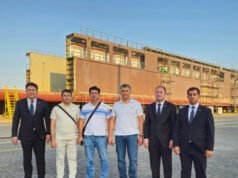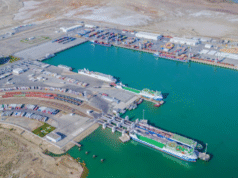Axar.az presents the interview with Honored Engineer Musa Suleymanov – Head of ADOG and Zira International Port.
– Mr. Suleymanov, you proposed a unique initiative to address the declining water level of the Caspian Sea – connecting the Caspian and Black Seas via an underground tunnel. How did the public react?
– This initiative garnered significant public attention. I addressed an open appeal to the presidents of the five Caspian littoral states – Azerbaijan, Russia, Iran, Kazakhstan, and Turkmenistan. Although no official responses have been received yet, there is a noticeable interest in the project through informal channels. Additionally, professionals from various fields – engineers, ecologists, water management experts, and civil activists – have contacted me to learn more about the technical details. This indicates the project’s relevance and urgency.
– Some experts argue that the Caspian Sea’s water level has historically fluctuated and that this is a natural process. What is your perspective on this?
– While it’s true that the Caspian Sea has experienced fluctuations in the past, the current decline differs significantly in terms of speed, scale, and geography. Climate change, the construction of reservoirs on the Volga and Kura rivers, increased water demand for agriculture, and reduced river flows have all contributed to a significant decrease in water inflow to the Caspian Sea. This is no longer a natural cyclical process but an ecological and anthropogenic crisis.
– Some believe that the project is too expensive and challenging to implement. What are your thoughts on this?
– The project is indeed large-scale. However, we must consider that a critical drop in the Caspian Sea’s level would have devastating effects on oil infrastructure, ports, maritime routes, biodiversity, and the entire ecosystem. For instance, operations at fields like Kashagan and Kalamkas, as well as ports like Alat and Turkmenbashi, are already facing challenges due to receding water levels. If this trend continues, the costs incurred by states in the future could be two to three times higher than the cost of the tunnel project.
Moreover, the continuous flow created by the tunnel could generate approximately 170 MW of hydroelectric power, translating to an annual revenue of around $100 million. Thus, the project is not only technically and ecologically sound but also economically viable.
– What international steps are necessary for the implementation of this project?
– The project requires the consent of both Caspian and Black Sea basin countries. Since the tunnel would pass underground, it doesn’t infringe upon territorial sovereignty, but transboundary cooperation is essential. This necessitates the establishment of ecological monitoring groups, hydrological and geological expert centers, and commissions. Bringing this initiative to the UN level is entirely feasible. In fact, it could become a collective regional endeavor.
Furthermore, due to climate change, the volume of water in global oceans and seas is increasing, raising questions about how to manage this surplus. I believe the Caspian Sea can serve as a natural reservoir to accommodate this excess water in a controlled manner. Subsequently, it’s also possible to channel water to ecosystems like Lake Urmia and the Aral Sea.
– So, the project isn’t solely about the Caspian Sea’s water level but has other strategic objectives?
– Absolutely. This project offers the following strategic outcomes:
1. Energy Security: The tunnel would facilitate the production of 170 MW of hydroelectric power.
2. Water Resource Distribution: It’s feasible to direct water to Lake Urmia and the Aral Sea.
3. Logistics and Trade Security: Stability of maritime routes would be maintained, ensuring the Caspian Sea’s transportation significance.
4. International Prestige: Azerbaijan and other countries would ascend as leaders in ecological innovation.
5. Ecosystem Balance: Currently, the influx of freshwater into the Caspian Sea is reducing salinity, disrupting microelements and increasing the risk of freezing. Introducing saline water through the tunnel could restore this balance.







